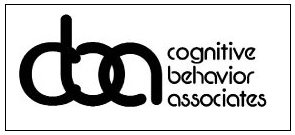Everyone deals with stress in their own way. Some coping mechanisms are considered healthy and can be helpful for lowering daily stress levels. However, other coping mechanisms are capable of causing more harm than the initial stress. Pulling out your own hair is one example of a harmful coping mechanism in response to stress. So let’s look at the deeper causes of why you pull out your hair?
This is one of several body-focused repetitive behaviors that may be observed in people who are struggling with a form of OCD or body dysmorphia. In other cases, body-focused repetitive behaviors may simply be a stress response that isn’t linked to a specific mental health condition. Regardless of the cause, individuals who demonstrate body-focused repetitive behaviors often require some level of professional intervention in order to prevent the behavior from becoming exacerbated by further stress.
Examples of Body-Focused Repetitive Behaviors
Trichotillomania (aka pulling out your own hair) is just one example of a body-focused repetitive behavior, and it’s more common than you think. Other examples of these types of behavior include picking at your skin and biting your nails. Many people exhibit mild versions of these behaviors, but it’s relatively easy for them to get out of hand once they have become an established part of how you respond to stress.
When to Ask for Help
In a perfect world we would ask for help the moment a potentially problematic behavior appeared. Unfortunately, that isn’t our reality, and many people put off treatment for a variety of personal reasons. With that said, you may need to re-evaluate your reasoning if any of the following occurs.
- If you know you’re causing physical damage to yourself, but you can’t seem to stop. This indicates that the behavior is now compulsive, and you no longer have full control.
- If your professional or personal life is negatively affected by the behavior. For example, if you lose your job or a partner as a result of your body focused repetitive behavior.
- If you do any form of visible damage to yourself. When struggling with trichotillomania, you may develop a bald spot on your head or entirely remove segments of your eyelashes and eyebrows. If you’re struggling with onychophagia (nail biting) or a skin picking disorder, you may cross this threshold when you first draw blood.
These are all indicators that your condition is serious and you need professional intervention if you’re going to keep the behavior in check.
How Do We Treat Body-Focused Repetitive Behaviors?
Cognitive behavior therapy is a common treatment for trichotillomania and other body focused repetitive behaviors. At Cognitive Behavior Associates your treatment will begin with a full assessment. The purpose of this assessment is to identify the severity of the behavior as well as some of its triggers.
In some cases, medication may help alongside cognitive behavior therapy to curb compulsive tendencies and stress responses. However, medication alone is rarely enough to end the behavior entirely. Whether or not you require medication, your cognitive behavioral therapist will work through your triggers with you to help build up less harmful coping mechanisms.
Progressing with Treatment
First, we identify early warning signs of your repetitive behaviors. Then your therapist will help you find ways of satisfying your urges without giving into the negative behavior. For many people, this means replacing one compulsion with another less harmful compulsion in the early stages of treatment.
Over time, you and your therapist will work towards delaying your response to your compulsive urges. They will help you find ways of distracting yourself for longer and longer periods of time until you become relatively desensitized to the anxiety you feel when asked to resist one of your compulsive behaviors. It’s a long process. There will remain hills and valleys. But you can work towards a future where you can resist your repetitive behaviors.

